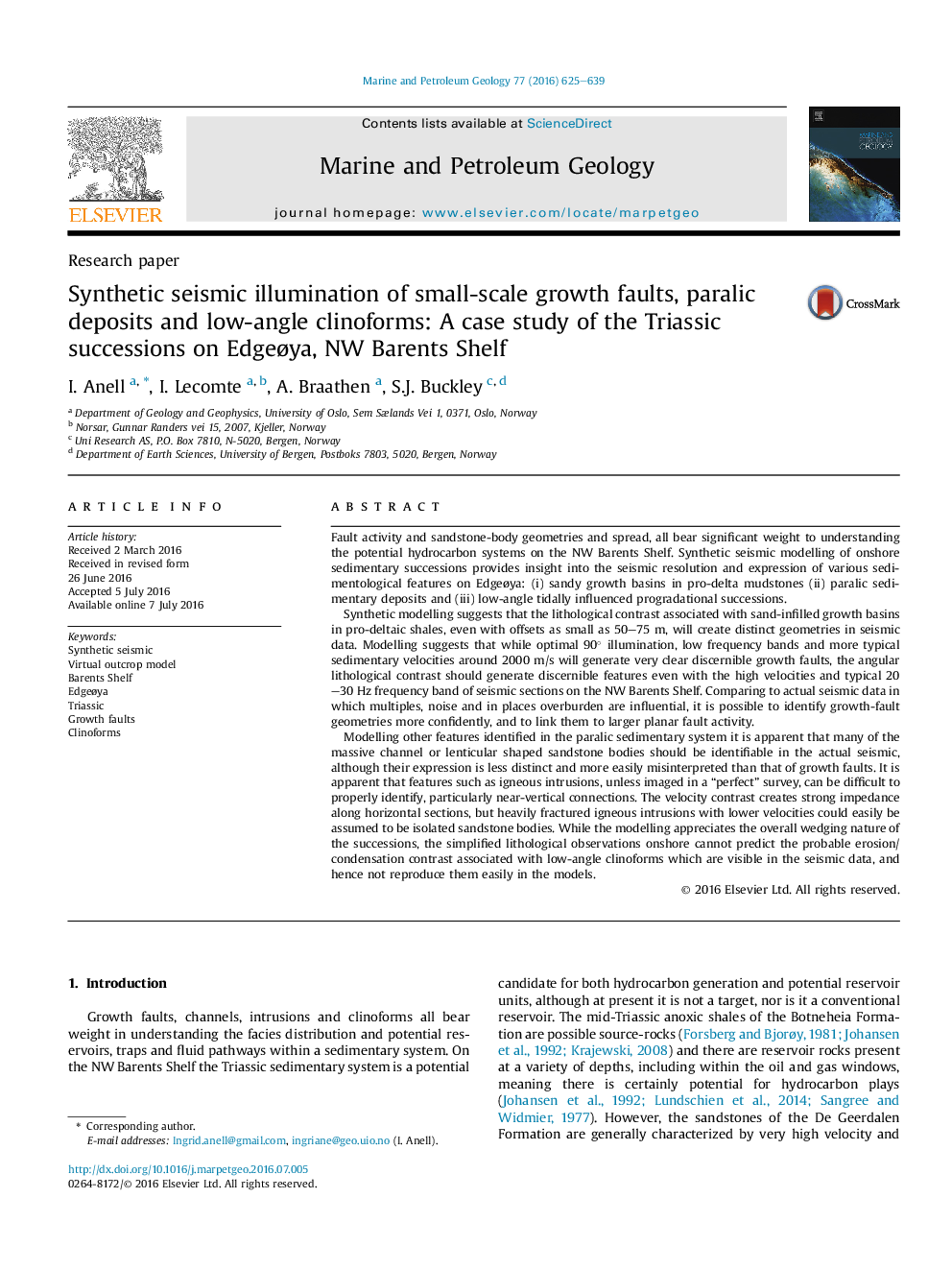| کد مقاله | کد نشریه | سال انتشار | مقاله انگلیسی | نسخه تمام متن |
|---|---|---|---|---|
| 6434591 | 1637150 | 2016 | 15 صفحه PDF | دانلود رایگان |

- Synthetic models improve ability to interpret seismic data on the Barents Shelf.
- Small scale sandy growth-basins in pro-delta shales generate strong seismic signals.
- Models of channels, intrusions, and IHS indicate ability to identify or misidentify.
- “Ideal” seismic provides high level of detail, yet features can be misinterpreted.
- Small-scale growth-faults on NW Barents shelf linked to larger regional faulting.
Fault activity and sandstone-body geometries and spread, all bear significant weight to understanding the potential hydrocarbon systems on the NW Barents Shelf. Synthetic seismic modelling of onshore sedimentary successions provides insight into the seismic resolution and expression of various sedimentological features on Edgeøya: (i) sandy growth basins in pro-delta mudstones (ii) paralic sedimentary deposits and (iii) low-angle tidally influenced progradational successions.Synthetic modelling suggests that the lithological contrast associated with sand-infilled growth basins in pro-deltaic shales, even with offsets as small as 50-75 m, will create distinct geometries in seismic data. Modelling suggests that while optimal 90° illumination, low frequency bands and more typical sedimentary velocities around 2000 m/s will generate very clear discernible growth faults, the angular lithological contrast should generate discernible features even with the high velocities and typical 20-30 Hz frequency band of seismic sections on the NW Barents Shelf. Comparing to actual seismic data in which multiples, noise and in places overburden are influential, it is possible to identify growth-fault geometries more confidently, and to link them to larger planar fault activity.Modelling other features identified in the paralic sedimentary system it is apparent that many of the massive channel or lenticular shaped sandstone bodies should be identifiable in the actual seismic, although their expression is less distinct and more easily misinterpreted than that of growth faults. It is apparent that features such as igneous intrusions, unless imaged in a “perfect” survey, can be difficult to properly identify, particularly near-vertical connections. The velocity contrast creates strong impedance along horizontal sections, but heavily fractured igneous intrusions with lower velocities could easily be assumed to be isolated sandstone bodies. While the modelling appreciates the overall wedging nature of the successions, the simplified lithological observations onshore cannot predict the probable erosion/condensation contrast associated with low-angle clinoforms which are visible in the seismic data, and hence not reproduce them easily in the models.
Journal: Marine and Petroleum Geology - Volume 77, November 2016, Pages 625-639